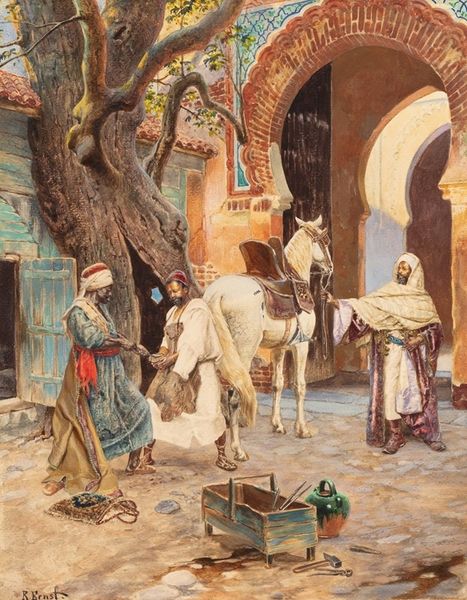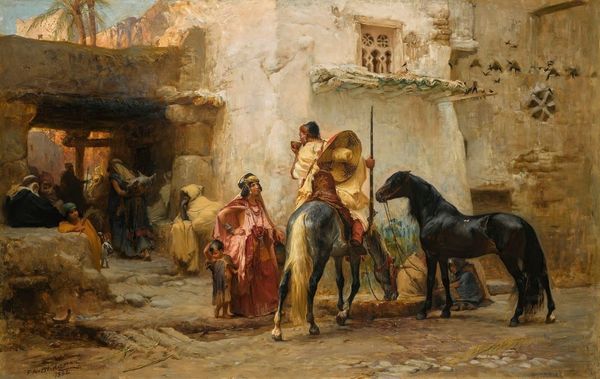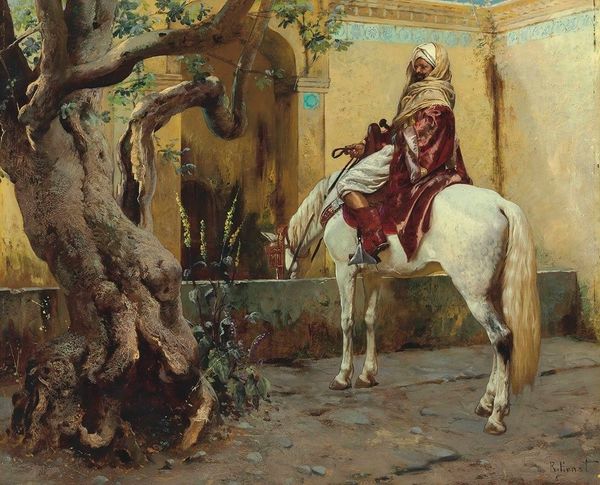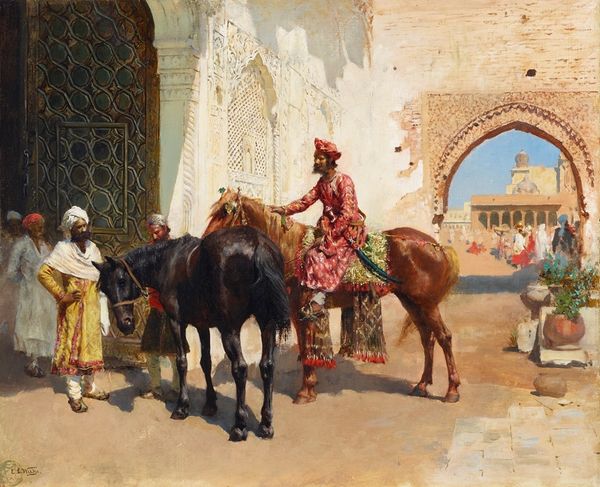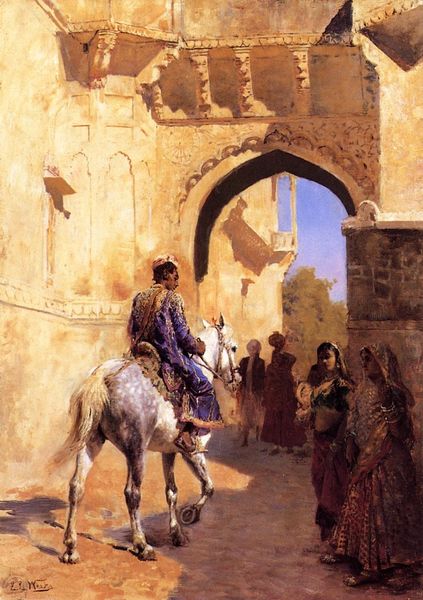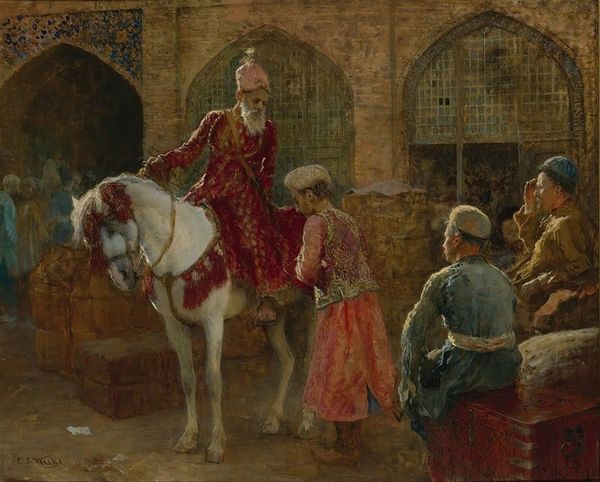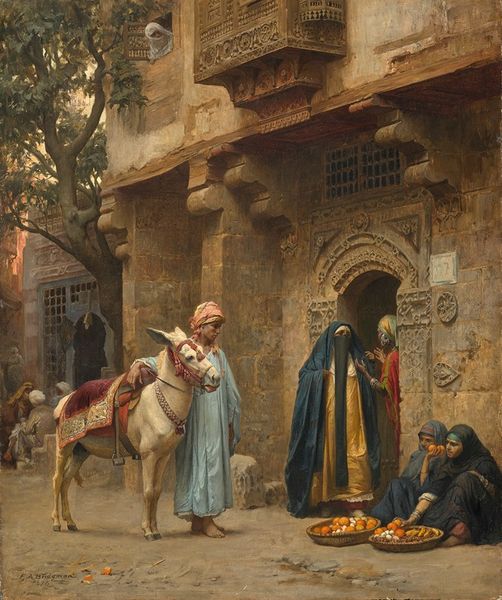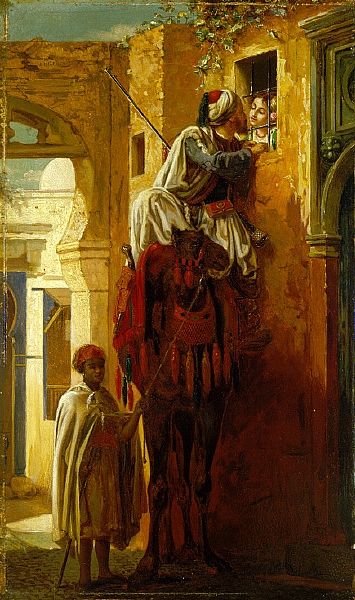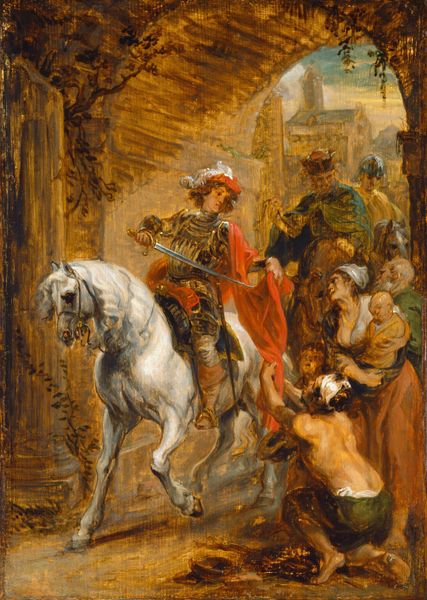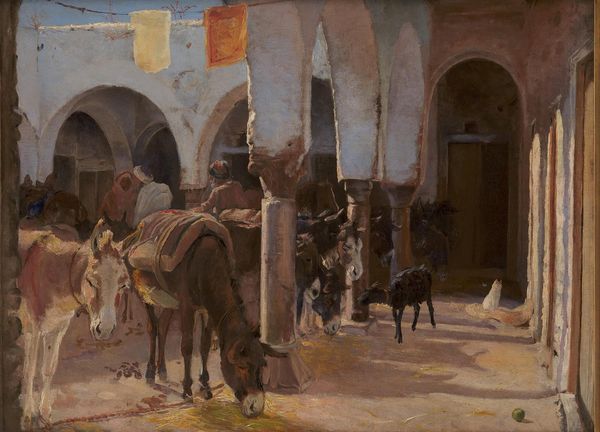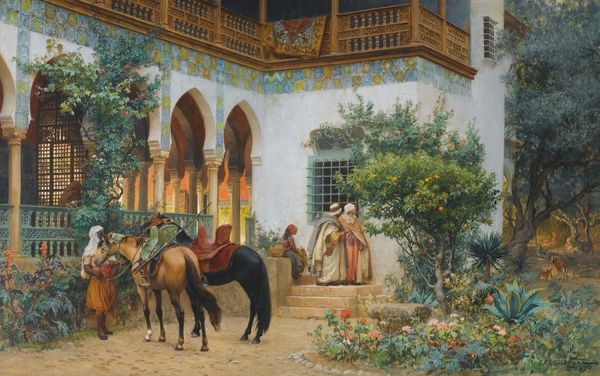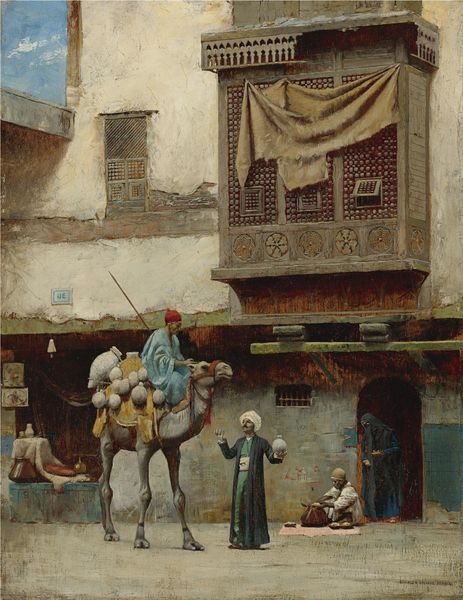
painting, oil-paint
#
figurative
#
painting
#
oil-paint
#
landscape
#
figuration
#
oil painting
#
orientalism
#
genre-painting
#
realism
Copyright: Public Domain: Artvee
Curator: Standing before us is Frederick Arthur Bridgman’s “Scene Taken in Morocco,” painted in 1885. I’m immediately transported. The warmth of the light, the subtle details of the architecture... it feels like a memory. Editor: The scale seems off. Look at the weight of the clay jug on that boy's shoulders. That’s more than just casual ambiance; we’re looking at labor, at what it takes to sustain life in this scene. The painting appears very orientalist in style, and, as always, labor is erased or invisibilized within the painting style, but is present none the less. Curator: You're right, there's a groundedness here. The realism style pulls the romantic exoticism back down to earth, doesn't it? Look at the contrast – the lady is standing with jeweled garb is contrasted with the servant struggling with this large jug on his head. What narratives, intended or unintended, can we derive from that? It's almost like two worlds brushing against each other. I wonder about that. Editor: Right! Bridgman uses oil paint here, that is obvious by the texture and brushstroke, which would’ve been considered a "high art" medium, to depict a society seemingly untouched by industrial processes. We have horses instead of machines, and manually carried goods instead of a streamlined distribution. Consider that in contrast to the European or United States society in the same era! The subject contrasts the art style, and is something to reflect upon. Curator: Absolutely! It's interesting how we still grapple with this now, this tension between honoring craftsmanship and embracing progress, or imagining some pre-industrial paradise untouched by the harshness of reality. It gets under my skin in the most peculiar ways. It almost wants to make me yearn for a lost reality, yet celebrate current reality... contradictory! Editor: But who determines what progress is? Bridgman, a Western artist painting this "scene" in Morocco? Is it progress from whose perspective, and what materials, visible or invisible, are extracted in that progress? Thinking through art from this lens provides a stark picture of the conditions surrounding the making of this painting itself. Curator: Right! Art style, art content... they tell two sometimes competing stories. It opens this art to more reflection and interpretation! Editor: Absolutely, I am thinking about our contemporary position within this historical gaze, how things shift, and what stories can be made and unmade!
Comments
No comments
Be the first to comment and join the conversation on the ultimate creative platform.

